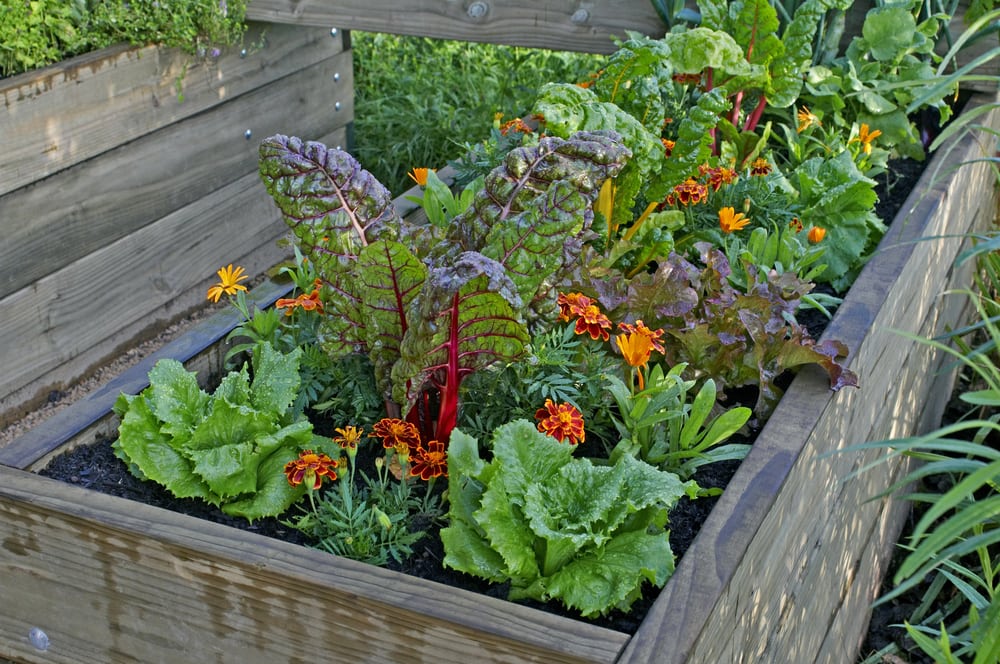Vegetable gardens are often arranged in orderly rows. Each vegetable has its place. However, companion planting flowers and vegetables in the same beds is a good way to boost yields and keep crops healthy. This practice can be beneficial in several ways.
Many experts encourage gardeners to plant a border of flowers around the perimeter of the garden. You can also plant flowers among the crops. This can attract beneficial insects directly to where they’re needed. You can also plant flowers specifically to attract butterflies, hummingbirds, and other desirable species.
While many edible plants, such as tomatoes, are self-pollinating, there are also many pollinator-reliant crops, including onions, berries, melons, pumpkins, squash, zucchini and cucumbers. In addition to attracting more pollinators to your vegetable garden, flowers can attract insects that can aid in pest control, such as ladybugs, spiders, ground beetles and predatory wasps.
Flowers also help to maintain a healthy garden ecology by holding the soil in place (less erosion) and by feeding the beneficial soil organisms when their roots die back.
How to plant flowers in your vegetable garden
First, you need to choose flowers that will bloom at the same time as your veggie crops. You can plant a variety of flowers to ensure that you’ve got continuous blooms throughout the entire growing season.
The flowers that attract hummingbirds are not the same as those that attract bees or beneficial wasps. The flower’s shape makes it easier or harder for different species to access the nectar and pollen. To attract bees and other pollinators, choose flowers with a composite shape, like zinnias, cosmos, daisies, sunflowers, and purple coneflower.
It is best to choose low-growing flowers so they don’t overpower your veggies. However, some crops (like lettuces) might benefit from a little shade during the summer months, so occasionally it makes sense to go with a taller variety. It depends on the needs of the vegetable.
5 Types of flower to grow with vegetables
1.Cilantro
Whether you love it or hate it, one thing is certain – its strong scent will repel pests. The flower and lacy foliage attract a wide number of beneficial insects. Cilantro will grow up to two feet tall. Although this is at the tall end of flowers for the vegetable garden, its upright growth habit allows sunlight to get through to shorter crops around it.
2.Nasturtium
Nasturtium is an annual herb that has peppery leaves and flowers. Giving off a strong scent, it repels pests. Its dense, low growing habit (12-18 inches) makes it an excellent living mulch as it covers the soil underneath taller crops, and feeds the soil as it dies back.
3.Sweet alyssum
Sweet alyssum is a low-growing plant that is popularly grown in landscape borders. It has a pleasant scent. Although there are many colors to choose from, the white flowers attract the most beneficial insects. It is effective as a living mulch because its shallow roots hold the soil in place.
4.Calendula
This annual flower can grow 18-24 inches tall. It exudes a sticky sap that traps pests like aphids and whiteflies, and keeps them off of nearby crops.
It attracts many types of pollinators and beneficial insects like ladybugs, hoverflies, and green lacewings. Calendula can even be grown like a cover crop over the winter to hold the soil in place.
5.German chamomile
These dainty flowers with their lacy foliage attract pollinators and beneficial insects. Growing to about 12 inches, chamomile is a prairie plant that has deep roots which dredge up nutrients. When the season is finished, cut the plant back to allow the nutrient-rich plant matter to fertilize the soil.

